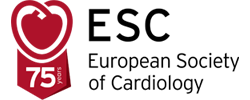“A lot more attention needs to be paid to CSA in heart failure,” said presenter of the study Professor Piotr Ponikowski, from the Medical University, 4th Military Hospital (Wroclaw, Poland). “It has a major adverse effect on both quality of life and mortality and we hope that by introducing this completely new treatment strategy correcting abnormal breathing patterns we may be able to positively influence patient symptoms and outcomes.”
Central sleep apnea (CSA) occurs when the brain fails to send the correct signals to the diaphragm (the dome shaped skeletal muscle separating the abdominal and thoracic cavities, that is one of the major muscles in breathing), causing patients to lose the natural pattern of breathing during sleep. Breathing patterns in patients with CSA are characterized by cycles of increased breathing followed by shallow breaths with periods of no respiratory effort. It is different from obstructive sleep apnea (OSA), which occurs when lungs work normally but the breathing passages collapse temporarily during sleep. Studies show that approximately 75% of Heart Failure patients have sleep disordered breathing, with half having CSA and half OSA.
Professor William Abraham, from The Ohio State University (Columbus, OHIO) one of the principal investigators, explains: “Heart failure patients, even those who appear to be doing well, hyperventilate probably as a result of subtle increases in their pulmonary artery pressure. Hyperventilation reduces CO2 concentrations in the blood and brain, and as C02 levels fall below the apnea threshold the brain tells the body to stop breathing until C02 levels rise above that threshold again.”
It turns out that the CSA is one of the most potent predictors of mortality in heart failure. A 2007 study by Shahrokh Javaheri, MD and colleagues that reviewed outcomes of patients with heart failure, found that median survival was halved for patients with CSA compared with those without (1). The reason CSA raises mortality, said Ponikowski, is due to activation of the sympathetic nervous system which results in intrathoracic pressure increases, arrhythmia and myocardial ischemia.
In the current study, investigators from five centres in the US and Poland set out to explore whether stimulating the phrenic nerve (the nerve controlling the diaphragm) would prevent CSA. In this acute clinical trial, 13 patients with stable, optimally treated heart failure and documented CSA (with a mean age of 54 years) were studied during sleep for two consecutive nights. All patients received a temporary transvenous lead that was implanted close to the phrenic nerve. On the first night there was no intervention (control), while on the second night therapy was provided by stimulating the phrenic nerve.
Results showed that transvenous phrenic nerve stimulation was safe and well tolerated in the acute over night study. Furthermore, results show that when the “therapy” night was compared to the “control” night there was a 91% reduction in central apneas (p<0.0001), 55 % improvement in oxygenation levels (p=0.001), 51 % decrease in arousal during the night (p=0.0005), and 49% reduction in the apnea hypopnea index(a measure of the severity of CSA), (p=0.0006).
The next stage, said Ponikowski, would be to undertake a larger long term study where CSA patients would be implanted with the RespiCardiaTM system, developed by Cardiac Concepts. This system includes a pulse generator that delivers small electrical pulses via a transvenous lead positioned close to the phrenic nerve. “This system has the potential to improve quality of life and clinical outcomes in many patients with central sleep apnea including those with chronic heart failure,” said Abraham.
Reference

 Our mission: To reduce the burden of cardiovascular disease.
Our mission: To reduce the burden of cardiovascular disease.